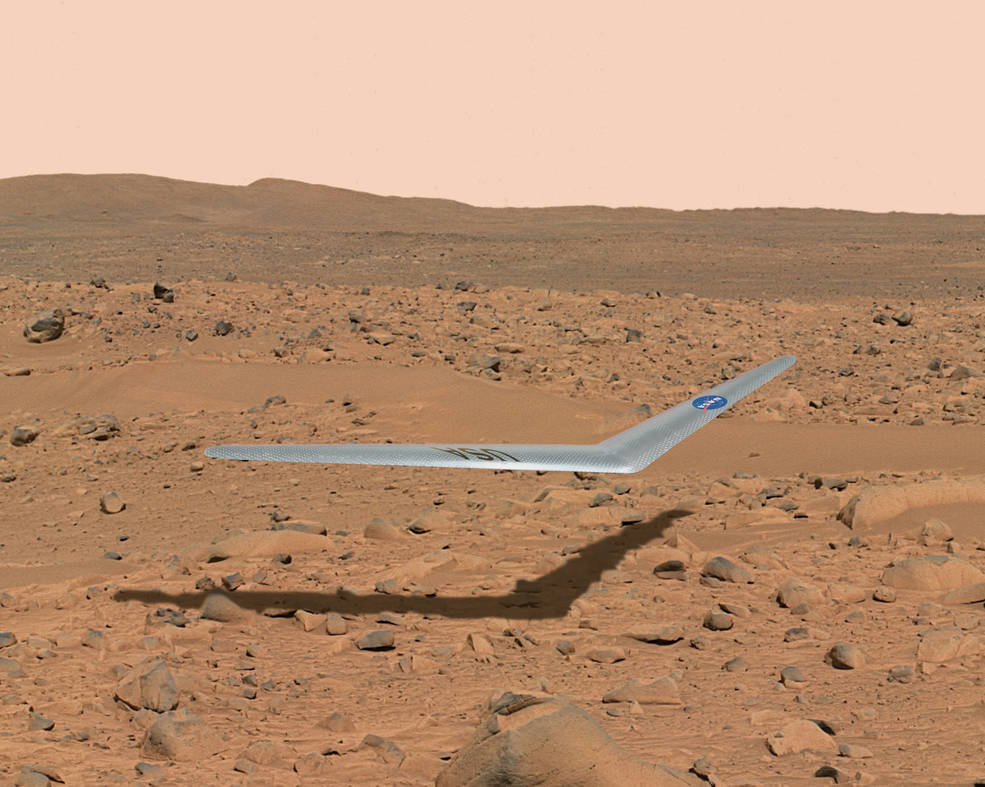NASA tests aeroplane for flight on Mars
NASA has prototyped the Preliminary Research Aerodynamic Design to Land on Mars, or Prandtl-m as the folks at NASA are calling it. The flying-wing aircraft will launch from a high altitude balloon later this year as part of testing to see if it can handle the Martian atmospheric conditions.
What you’re seeing in this image could possibly be the first aeroplane to fly on Mars. Yes, on Mars.
NASA has prototyped the Preliminary Research Aerodynamic Design to Land on Mars, or Prandtl-m as the folks at NASA are calling it.
This illustration shows what a Prandtl-m might look like flying above the surface of Mars. (Credits: NASA Illustration / Dennis Calaba)
The flying-wing aircraft is set to launch from a high altitude balloon later this year as part of testing. The Prandtl–m will be released at about at 100,000 feet altitude in order to mimic flight conditions in Mars’ atmosphere, according to Al Bowers, NASA Armstrong chief scientist and Prandtl-m program manager.
The tests will show not only how exactly the aircraft works, but also what changes and updates need to be made to get it to fold up and deploy from a 3U CubeSat that will reside in a future Mars rover.
According to NASA reports:
“The aircraft would be part of the ballast that would be ejected from the aeroshell that takes the Mars rover to the planet. It would be able to deploy and fly in the Martian atmosphere and glide down and land. The Prandtl-m could overfly some of the proposed landing sites for a future astronaut mission and send back to Earth very detailed high resolution photographic map images that could tell scientists about the suitability of those landing sites.”
The aeroplane would have to glide for about 10 minutes at 2,000 feet once deployed in order to reach the Martian surface. Its wingspan would be about 24 feet and the entire craft would weigh less than a pound, composed of composite materials such as fibreglass or carbon fibre.
After this year’s test, NASA will conduct another round of tests from a balloon to see if the aircraft can return to the launch site on a flight up to five hours long, making its way back to Earth.
NASA will be working with summer community college students to further develop ideas for the first craft’s deployment.
Story via NASA.


